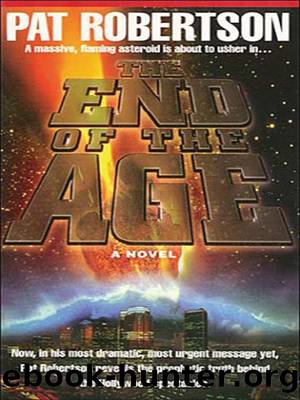The End of the Age by Pat Robertson

Author:Pat Robertson
Language: eng
Format: epub
Tags: ebook, book
Publisher: Thomas Nelson
Published: 2010-05-04T00:00:00+00:00
CHAPTER FOURTEEN
ITO WATANABE FLIPPED OFF his television set. He had work to do. He was general manager of the Tokai nuclear power plants belonging to the Japan Atomic Power Company, Ltd. The reactors were co-located in Tokai Mura in the Ibaraki Prefecture, a short distance to the north of Tokyo. Both had been built in low-lying areas facing the Pacific Ocean.
Ito had begun work with Japan Atomic when the initial construction of Tokai Number One was completed in July of 1966. He was promoted to apprentice engineer in March of 1978 as soon as the American company, Ebasco, had finished installing the 1056-megawatt General Electric reactors for Tokai Number Two.
Ito soon established himself as a loyal company man. He went to work early. He came home late. Promotions came slowly but regularly. His wife and three children always took second place to Japan Atomic. As a consolation, Itoâs salary was enough to provide the family with a modest, but comfortable, house and a university education for the children when they grew older.
Now, at fifty-four, Itoâs hard work had finally paid off. The president of Japan Atomic Power Ltd. had personally recognized his loyalty and hard work. Ito Watanabe was now the general manager of the power plants that helped to send power to Tokyo itself.
Over the years, Ito had assured himself that without nuclear power, Japan would be at the mercy of a band of thieving desert sheiks. The Japanese industrial giant had grown because of nuclear power, not imported oil. The work of Ito Watanabe, he told himself, is partially responsible for the economic victories of Japan over America. I am like a soldier in battle. Ito Watanabe is a hero of Japan.
His portrayal of himself as a man of some achievement was no idle boast. Japan, after all, had fifty-four nuclear power plants in various stages of construction. Of these, Ito thought, forty-nine are operating nuclear plants that produce 18,859 megawatts of electricityâthirty percent of our nationâs electric power. The facilities were clustered on the southern coastal areas of the island of Kyushu; on the island of Shikoku; along the Pacific Coast of Honshu, the principal Japanese island; from Shizuoka, south of Tokyo; then north of Tokyo to Ibaraki, Fukushima, and Sendai. Directly across from Tokyo on the Sea of Japan facing Korea were the Kansai Electric Power Companyâs installations in Fukui. In short, in Japan, nuclear power was in reach of everyone. And Ito was one of those who managed an important piece of this empire of power.
In 1995, Itoâs company sent him and a group of its top engineers to Kiev in the Ukraine. Next, they went to Chernobyl. There, he learned firsthand of the cooling pipes that had ruptured, the warning devices that had failed, and the explosion of the Number Four reactor, which released into the atmosphere thirty to forty times the radioactivity of the atomic bombs dropped on Hiroshima and Nagasaki.
He traveled into Belarus and saw abandoned villages. He learned that nine years after the disaster, three million people were living in contaminated areas.
Download
This site does not store any files on its server. We only index and link to content provided by other sites. Please contact the content providers to delete copyright contents if any and email us, we'll remove relevant links or contents immediately.
| Biblical | Christian |
| Historical | Jewish |
| Mystery | Romance |
| Science Fiction & Fantasy | Short Stories & Anthologies |
| Western |
From Sand and Ash by Amy Harmon(4388)
Housekeeping by Marilynne Robinson(4349)
The Five People You Meet in Heaven by Mitch Albom(3476)
Lamb, the Gospel According to Biff by Christopher Moore(3391)
The Time Keeper by Mitch Albom(3052)
In the Woods by Tana French(2534)
Call Me by Your Name: A Novel by André Aciman(2184)
The Next Person You Meet in Heaven by Mitch Albom(2148)
Unlocked: A Love Story by Karen Kingsbury(2090)
Practical Magic by Alice Hoffman(2062)
A Kingsbury Collection by Karen Kingsbury(2060)
Unworthy by Antonio Monda(2058)
The Masterpiece by Francine Rivers(1935)
Smilla's Sense of Snow by Peter Hoeg(1908)
The Absolutist by John Boyne(1903)
01 The Rising by Tim Lahaye(1863)
LORD OF THE FLIES by William Golding(1815)
THE DA VINCI CODE by Dan Brown(1736)
Torrent Falls by Jan Watson(1715)
